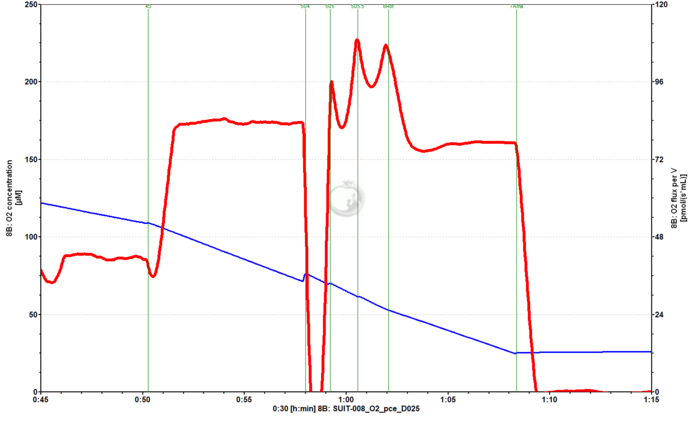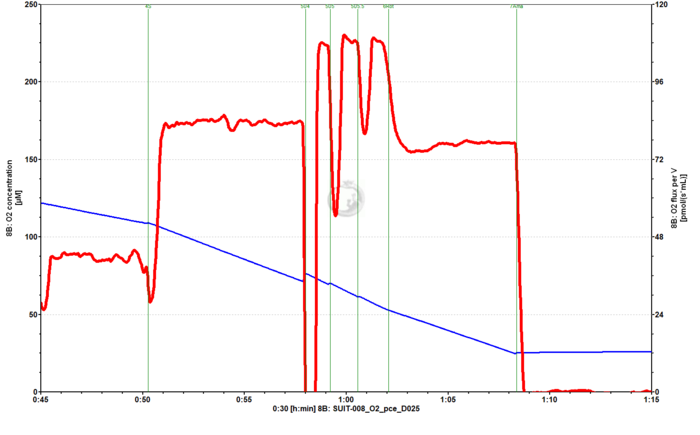Smoothing: Difference between revisions
No edit summary |
No edit summary |
||
| Line 19: | Line 19: | ||
Recommendation: Set "Slope smoothing" to 20 for performing and analyzing experiments with biological sample (strongly recommended in the case of uncoupler titrations). A slope smoothing of 20 increases the time or wavelength [[resolution]], but increases the [[noise]] of the signal. | Recommendation: Set "Slope smoothing" to 20 for performing and analyzing experiments with biological sample (strongly recommended in the case of uncoupler titrations). A slope smoothing of 20 increases the time or wavelength [[resolution]], but increases the [[noise]] of the signal. | ||
The | The following DatLab traces illustrate an example of "Slope smoothing" using 20 versus 40 data points: | ||
[[File:Slope smoothing 40.png| | [[File:Slope smoothing 40.png|700px|thumb|left|Slope smoothing 40]] | ||
[[File:Slope smoothing 20.png| | [[File:Slope smoothing 20.png|700px|thumb|left|Slope smoothing 20]] | ||
Revision as of 10:15, 12 March 2019
Description
[[Description::Various methods of smoothing can be applied to improve the signal-to-noise ratio. For instance, data points recorded over time [s] or over a range of wavelengths [nm] can be smoothed by averaging n data points per interval. Then the average of the n points per smoothing interval can be taken for each successively recorded data point across the time range or range of the spectrum to give a n-point moving average smoothing. This method decreases the noise of the signal, but clearly reduces the time or wavelength resolution. More advanced methods of smoothing are applied to retain a higher time resolution or wavelength resolution.]]
Reference: [[Info::Press 1990 Computers in Physics]]
MitoPedia concepts:
MitoPedia topic::MitoFit Quality Control System
MitoPedia methods:
Respirometry,
Fluorometry,
Spectrophotometry
MitoPedia O2k and high-resolution respirometry:
DatLab
Communicated by Harrison DK, 2011-11-25
DatLab oxygen flux: performance and data analysis
Recommendation: Set "Slope smoothing" to 20 for performing and analyzing experiments with biological sample (strongly recommended in the case of uncoupler titrations). A slope smoothing of 20 increases the time or wavelength resolution, but increases the noise of the signal.
The following DatLab traces illustrate an example of "Slope smoothing" using 20 versus 40 data points:


